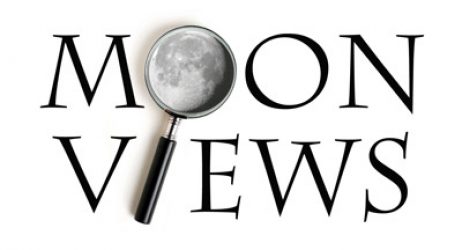 “Forty years after the last Apollo spacecraft launched, the science from those missions continues to shape our view of the moon. In one of the latest developments, readings from the Apollo 14 and 15 dust detectors have been restored by scientists with the National Space Science Data Center (NSSDC) at NASA’s Goddard Space Flight Center in Greenbelt, Md. “This is the first look at the fully calibrated, digital dust data from the Apollo 14 and 15 missions,” said David Williams, a Goddard scientist and data specialist at NSSDC, NASA’s permanent archive for space science mission data. The newly available data will make long-term analysis of the Apollo dust readings possible. Digital data from these two experiments were not archived before, and it’s thought that roughly the last year-and-a-half of the data have never been studied.” More
“Forty years after the last Apollo spacecraft launched, the science from those missions continues to shape our view of the moon. In one of the latest developments, readings from the Apollo 14 and 15 dust detectors have been restored by scientists with the National Space Science Data Center (NSSDC) at NASA’s Goddard Space Flight Center in Greenbelt, Md. “This is the first look at the fully calibrated, digital dust data from the Apollo 14 and 15 missions,” said David Williams, a Goddard scientist and data specialist at NSSDC, NASA’s permanent archive for space science mission data. The newly available data will make long-term analysis of the Apollo dust readings possible. Digital data from these two experiments were not archived before, and it’s thought that roughly the last year-and-a-half of the data have never been studied.” More
Lunar Orbiter 3 Image 3146_H3

This newly retrieved high resolution image, frame 3146_H3, was taken by Lunar Orbiter 3 on 20 February 1967 at 18:39 GMT LPI reference. Images: [large at LOIRP] [Very Large at NASA NLSI]
Lunar Orbiter 3 Image 3138_H3

This newly retrieved high resolution image, frame 3138_H3, was taken by Lunar Orbiter 3 on 20 February 1967 at 15:10 GMT LPI reference. Images: [large at LOIRP] [Very Large at NASA NLSI]
Aeronautics and Space Report: Highlights 1966: Lunar Orbiter
Note: Lunar Orbiter Segment starts at 1:28
“The Lunar Orbiter program was a series of five unmanned lunar orbiter missions launched by the United States from 1966 through 1967. Intended to help select Apollo landing sites by mapping the Moon’s surface, they provided the first photographs from lunar orbit. All five missions were successful, and 99% of the Moon was mapped from photographs taken with a resolution of 60 meters or better… All Lunar Orbiter craft were launched by an Atlas-Agena D launch vehicle. The Lunar Orbiters had an ingenious imaging system, which consisted of a dual-lens camera, a film processing unit, a readout scanner, and a film handling apparatus. Both lenses, a 610 mm narrow angle high resolution (HR) lens and an 80 mm wide angle medium resolution (MR) lens, placed their frame exposures on a single roll of 70 mm film… The film was then processed, scanned, and the images transmitted back to Earth. During the Lunar Orbiter missions, the first pictures of Earth as a whole were taken, beginning with Earth-rise over the lunar surface by Lunar Orbiter 1 in August, 1966.”
Lunar Orbiter 3 Image 3138_H2

This newly retrieved high resolution image, frame 3138_H2, was taken by Lunar Orbiter 3 on 20 February 1967 at 15:10 GMT LPI reference. Images: [large at LOIRP] [Very Large at NASA NLSI]
Lunar Orbiter 3 Image 3138_H1

This newly retrieved high resolution image, frame 3138_H1, was taken by Lunar Orbiter 3 on 20 February 1967 at 15:10 GMT LPI reference. Images: [large at LOIRP] [Very Large at NASA NLSI]
Lunar Orbiter 3 Image 3135_H1

This newly retrieved high resolution image, frame 3135_H1, was taken by Lunar Orbiter 3 on 20 February 1967 at 08:14 GMT LPI reference. Images: [large at LOIRP] [Very Large at NASA NLSI]
Lunar Orbiter 3 Image 3135_H2

This newly retrieved high resolution image, frame 3135_H2, was taken by Lunar Orbiter 3 on 20 February 1967 at 08:14 GMT LPI reference. Images: [large at LOIRP] [Very Large at NASA NLSI]
Lunar Orbiter 3 Image 3127_H2

This newly retrieved high resolution image, frame 3127_H2, was taken by Lunar Orbiter 3 on 20 February 1967 at 04:44 GMT LPI reference. Images: [large at LOIRP] [Very Large at NASA NLSI]
Lunar Orbiter 3 Image 3150_H1

This newly retrieved high resolution image, frame 3150_H1, was taken by Lunar Orbiter 3 on 20 February 1967 at 18:40 GMT LPI reference. Images: [large at LOIRP] [Very Large at NASA NLSI]
Lunar Orbiter 3 Image 3150_H3

This newly retrieved high resolution image, frame 3150_H3, was taken by Lunar Orbiter 3 on 20 February 1967 at 18:40 GMT LPI reference. Images: [large at LOIRP] [Very Large at NASA NLSI]
Lunar Orbiter 3 Image 3094_M

This newly retrieved medium resolution image, frame 3094_M, was taken by Lunar Orbiter 3 on 18 February 1967 at 11:01 GMT LPI reference. Images: [large at LOIRP] [Very Large at NASA NLSI]
